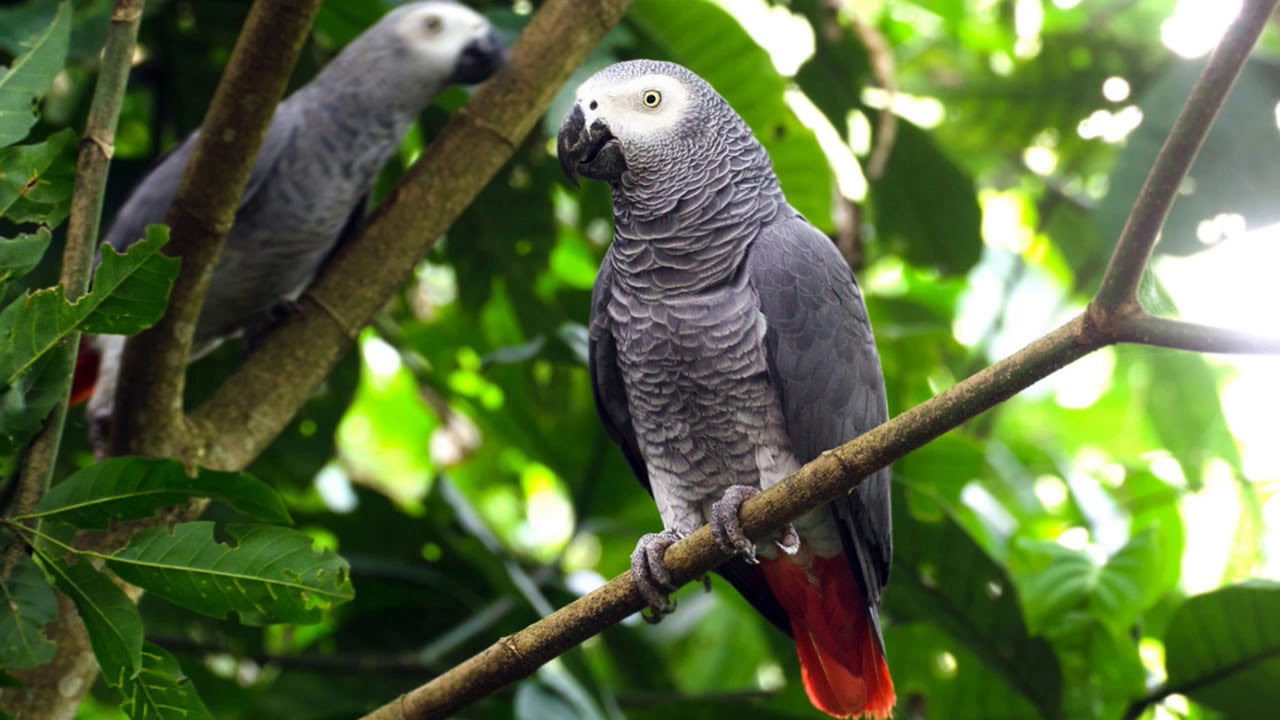African Grey Parrot Sounds, The African Grey Parrot is widely known for its exceptional intelligence and remarkable vocal abilities. Native to the rainforests of West and Central Africa, this highly social bird has become one of the most popular parrot species among bird enthusiasts. One of the most fascinating aspects of this species is its wide variety of sounds. If you’re curious about African Grey Parrot sounds, this article will explore what they are, what they mean, and how they reflect the parrot’s personality and emotions.
The Range of African Grey Parrot Sounds
African Grey Parrots are natural mimics. Their vocal range includes everything from whistles and clicks to complex phrases and environmental noises. Some of the most common African Grey Parrot sounds include:
- Whistling: This is often a sign that your parrot is happy or curious. Many owners teach their parrots to whistle tunes, and the birds pick them up quickly.
- Chattering: These soft, often rhythmic murmurs are signs of contentment. Your parrot may chatter to itself when it’s relaxed or preening.
- Screeching or Squawking: Loud and sharp, these sounds usually indicate stress, fear, or excitement. A sudden loud noise or change in the environment can trigger these reactions.
- Mimicry: African Greys are masters at mimicking human speech, household appliances, phone rings, doorbells, and even other pets. This is not just mimicry for fun—it’s part of how they communicate and bond with their human companions.
- Growling or Clicking: These warning sounds may mean the bird is annoyed or feels threatened. It’s best to give them space when you hear these sounds.
Why Do African Grey Parrots Mimic Sounds?
The ability to mimic a wide range of sounds is part of the African Grey Parrot’s survival strategy in the wild. In the dense rainforest, communicating through a mix of vocalizations helps them stay in touch with their flock. In captivity, they treat their human family as their flock and mimic human voices or environmental sounds to communicate and feel included.
Interpreting African Grey Parrot Sounds
Understanding what your parrot is trying to say can help build a stronger bond. For instance:
- Repetitive talking or whistling can indicate boredom or a desire for attention.
- Quiet muttering while exploring may mean they’re curious or feeling safe.
- Loud, repetitive squawking could be a sign of distress or loneliness.
Paying attention to the context of the sound—such as time of day, surroundings, and your parrot’s body language—can help you better understand your bird’s needs.
Encouraging Healthy Vocal Behavior
To encourage positive African Grey Parrot sounds, interact with your bird regularly. Teach it new words or tunes, reward calm vocalizations, and avoid reinforcing negative or overly loud behavior. A mentally stimulated parrot is less likely to develop problematic screaming habits.
Conclusion
African Grey Parrots aren’t just pets—they’re complex creatures with their own emotions, intelligence, and language. By understanding the wide variety of African Grey Parrot sounds, you can better communicate with your feathered friend, meet their needs, and enjoy a more fulfilling relationship. Whether it’s a cheerful whistle or a carefully mimicked phrase, every sound is a glimpse into their lively and expressive world.

